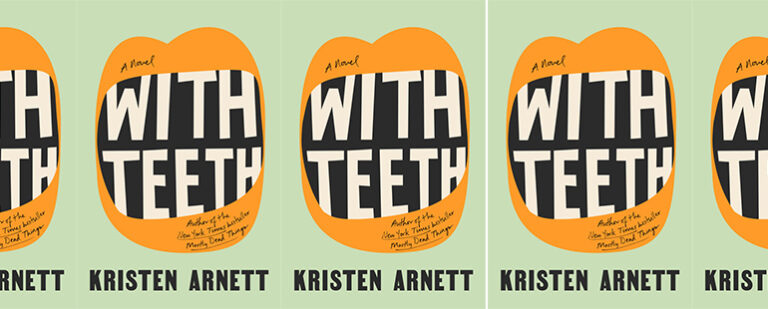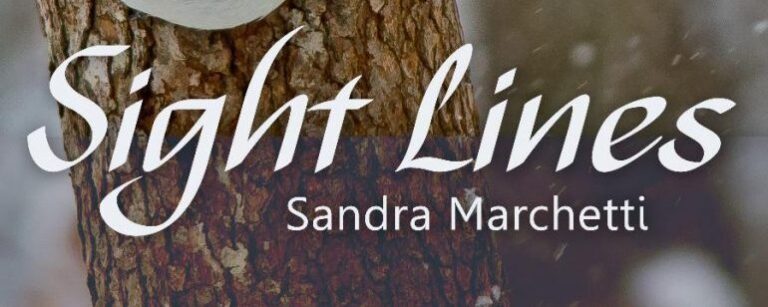“Those who are still around have an obligation to honor that tragedy but turn it into something else”: An Interview with Hua Hsu
New Yorker writer and English professor Hua Hsu was a Silicon Valley kid whose worldview was defined by music—he mused about the death of Kurt Cobain via fax to his father in Taiwan, curated his bedroom wall collage around a poster of the 1990s band Elastica, and started a zine as a teen that was “earnest yet cynical” in order to get free CDs from record companies. “Coolness” was essential in his self-definition, a coolness defined by what he rejected: Beverly Hills, 90210, George Bush, hippies, Pearl Jam, and Abercrombie & Fitch.
Hsu’s college best friend, Ken—the well-adjusted, Japanese American frat boy he met early in his freshman year at the University of California, Berkeley—loved Pearl Jam and Abercrombie & Fitch. “My wariness about Ken was compounded by the fact that he was Asian American, like me,” Hsu writes, in his new memoir, Stay True. “All the previous times I had met poised, content people like Ken, they were white.” Next to Ken, Hsu, the child of recent immigrants to the United States, felt “discomfort at a molecular level.”
Hsu’s deeply moving, coming-of-age memoir chronicles this unexpected friendship. We see the pair’s late-night drives around the Bay Area, the hundreds of cigarettes they smoke, the rhetorical arguments they have over the best band of all time, and the dozens of times they watch the martial arts comedy The Last Dragon (a film that serves as the inspiration for their own never-produced screenplay, Berry Gordy’s IMBROGLIO). “We are not men without a culture,” Hsu writes. “We just have to make it ourselves.”
Peppered in these anecdotes are passages about friendship from thinkers Hsu encountered in college and grad school, including one from Jacques Derrida that encapsulates the book’s arc: “The intimacy of friendship…lies in the sensation of recognizing oneself in the eyes of another. We continue to know our friend, even after they are no longer present to look back at us. From that very first encounter, we are always preparing for the eventuality that we might outlive them, or they us.”
In 1998, the summer after their junior year, Ken was carjacked and murdered after a late-night party at his Berkeley apartment. Hsu turned to writing soon after his death, writing letters to Ken and gathering photographs, fliers, and other ephemera from their college years together. He kept at the project on and off for over twenty years, writing about Ken and the time in his life surrounding their friendship and Ken’s death for himself, never thinking that his notes would someday coalesce into a book.
The title of the memoir comes from the phrase the friends used in correspondence: “The joke that gave birth to the phrase is lost to time, but I still remember the elaborate handshake that accompanied it,” Hsu writes. “‘Stay true to the game,’ later abbreviated to ‘stay true.’ True to yourself. True to who you might have become.” Stay True ends with Hsu going to therapy to attend to his irrational guilt over Ken’s death. It helps him come to the realization that what he wanted to write was not a eulogy but a “true account of the deceased,” one filled with joy.
Margaret Juhae Lee: Your book spoke to me in so many ways. I’m an Asian American music nerd and also had a friend who was murdered when I was in my twenties. I felt especially drawn to talk to you about how you transcribed that experience into words. I’ve been struggling myself over how to write about it after so many years.
Hua Hsu: That was one thing I really struggled with…I feel like I’m good at copying people or just studying what other people have done and emulating it. I felt like I had to figure out my own model because I didn’t grow up reading any narratives from an Asian American perspective. I don’t think I felt like at a loss, necessarily, because there were so many interesting people around me, and it was before we thought really seriously about representation and what not. I spend a lot of time in Taiwan growing up, and I was constantly watching movies and TV shows with people who looked like me. But I think when it came time to think about these specific themes—not necessarily trying to figure out what it means to be Asian American, per se, but how to write about the kinds of conversations I would have with my friends about our parents, or about where we fit in or how we learned to be friends or to be dudes—that was more of a challenge, because I think a lot of stuff is written through the perspective of identity in a way where there’s an endpoint in mind. I didn’t have an endpoint in mind with my book. I had to figure it out just by doing it.
MJL: So when did you feel like this was a book? You’ve been writing it for decades.
HH: When I started writing it shortly after the incident, I was just writing to get stuff down on paper. I wasn’t really conscious of what it could become. Honestly, it didn’t seem like a book until I finished it. I wrote a version of it that was twice as long as it is now, and it was all over the place. It was very comforting to finish that. In a way, what I had set out to write back in 1998 was this sprawling history of the time but also of my friends and I. I really thought that the book would be this catalogue of the entire decade. I needed to get it all out in order to understand what would be useful for someone who wasn’t me. Once it got cut down to around sixty thousand words, it felt more of a book, but it’s still very weird to me that it exists as such. I find it strange that people have read it.
MJL: Does it feel different than some of the more personal articles you’ve written about your family?
HH: Yeah, absolutely. I sort of happened into becoming a journalist or writer. I didn’t have a map for where I was going. It was something that I did because I kept getting opportunities. In the back of my mind, I would think back to this thing I wanted to write, which ended up being the book. I would go back to it a few times a year. As time passed, I think my relationship to the thing and to who I was as a younger person—these things changed. It was really comforting; it brought me a lot of peace to write about the past.
Over the years, I’ve written a few vaguely personal things about food, or friends who passed away. But I’d never have put it all together in the way I feel the book is comprehensively who I was. Over the course of putting the book together, I would go back to things I’d written before. When I was working as a music critic, I viewed it as a form of practice. You’re describing the same stuff over and over. There are clearly people who are different, but how many times can you describe what a guitar or bass line sound like? I remember thinking there’s this other thing you want to do and in order to do that you’ll need to become a better writer. In putting the book together, much of it is drawn from my journals back then or from random things I would write in my free time. But pieces I had written in the past that sort of hinted at emotions or dreams or images that I would always return to—those things found a home in this book.
I had written a piece about Nirvana for the New Yorker a couple of years ago. At the time, it was about the phenomenon, but it made me think about my own formation as a listener and as a young teen elitist. A bit of that makes it back into this book when I’m writing about the death of Kurt Cobain and my relationship with my father. At the time, I didn’t think that me understanding my family had bearing on how I would react to tragedy or friendship, but during the course of writing the book, I realized it did.
MJL: I wanted to ask you about how you came to the structure of your memoir. You begin the book with a scene with Ken and your friends in college and then you go back to family history.
HH: All the stuff about my parents, that was in the “everything I’ve ever thought in life” version of the book. I thought about taking it all out and using it for an entirely different book about culture and family. When I got to the end, there’s a moment where a therapist asks me about my family, and it’s this moment I didn’t realize the significance of until years later. In the moment, I thought she was making assumptions about my family, but in reality, she was pointing out how we’re formed by experiences, our household, mannerisms, gestures, language. It made sense to do that work in the book, if that makes sense. There is this loop structure to the book where the book is the answer—writing the book is the thing that I’ve been searching for throughout much of the book.
It became essential to have this section about my family because of what the therapist was challenging me to think about. At the end of the book, my view of self changes from “we can be fully formed by ourselves” to “you’re influenced as much by the things you want to inherit from your family as the things you would choose to reject from them.” I think the only true character in the book is me—I was the ridiculous person, the source of comic relief. It makes sense to show that all along people have just been tolerating me, beginning with my parents. (Laughs)
MJL: All the characters in your book are tied to that special time of life when you’re traveling as part of a pack and yet trying to figure out who you are as an individual. It makes the book read like a group memoir in a sense. A lot of the other characters are identified only by their first name, and you also use “we” a lot. Could you talk about that decision?
HH: I did hope to write something that would resonate with my friends in the book, many of whom are still my friends now. I consciously tried not to write it with them or bring them into it too much because a lot of personal writing is about misremembering things or building your worldview around something you misheard. Also, part of writing this book was about communicating things to my friends that I don’t think I was very good at communicating directly. I think we were all shell-shocked. We were all so young. Almost everyone in the book has read it, and I’ve had some unbelievable conversations. I feel so fortunate to be able to have that experience with so many of my friends—a lot of these people I have talked to continuously for the past twenty years. I think it’s a real treasure to have this opportunity to reflect on how fortunate we ultimately were to have been able to build these relationships even in the face of such tragedy, to reflect on the influence that Ken had on all of our lives moving forward.
Because I’m conscious of writing from the perspective of being an Asian American, I do sometimes use pronouns in a way that might be confusing to people. As a reader, you often read like a white writer writing declaratively from the perspective of “we” or “us.” And even if you feel alienated from that as a person color, you understand that what they’re doing is a universalizing gesture. Or the writer may just be assuming that their gesture is universal. I was trying to do that too, not necessarily to say, “You can understand my experience,” but to give the reader a moment of pause to think, Wait, who is the “we” here? Is it collective humanity, is it “we” Californians, is it Anthony, Sean, Gwen “we”? I don’t mind that confusion or that moment when the reader is reminded of their position.
MJL: It’s also a radical act as a person of color to declare that we deserve to have a “we.”
HH: Yeah, and sometimes it’s precisely that. “We as the children of immigrants.” “We as people of color.” “We as Asian Americans.” And sometimes just “we as thoughtful people.” It’s up to the reader to decide how far they want to go in trying to identify with that.
MJL: You also use “you,” when you are addressing Ken, which I find so touching. How did writing these parts go?
HH: It just happened. I’ve been writing it for years just on random days in a year. I had documents that traveled from computer to computer for twenty years—notes, lists, scenes. I had a fellowship from 2019 to 2020, and the obligation was to work on a book. I don’t think I would have given myself a chance to do it otherwise. I wouldn’t have carved out that kind of space and time. I set up my office with all my old things, and I just sort of sat with them. I found a letter from my old roommate Anthony, which was written right after we got back from Ken’s funeral. He expressed that he and our other friend Sean were concerned that I was not really dealing with his death. Not that any of us knew what that meant. I remember getting the letter and never acknowledging it. And one of the first things I did was to write Anthony back after all these years, even though we talk every few days. He didn’t even remember the letter, but it was a freeing exercise to write him back.
One of the first things I did when we found out what happened was that I wrote Ken a letter and told him everything that we’d missed out on. Every now and then I would write him again. I didn’t really think of these as part of the book because it didn’t seem to be the kind of thing that I could pull off. There are different visions of the book where it ends with me writing a short story about what our lives would have become. And another version with me completing the screenplay we wrote. But all of these things required a level of creativity that I don’t possess. As I was revisiting the screenplay we had started—it’s an afront to screenwriting to call it a script, since it was like three pages of notes—I felt like I was there with him, which is why, as I was writing, I randomly started addressing him directly. When I read it, I realized it actually worked. Much of the book up until this point had description with some distance to it, but this is the moment where that collapses.
I think when I set out to write this when I was in my twenties, I thought, This is the saddest shit that will ever happen to any of us. And that is the tone of writing then. But you live and terrible things are always happening, and you realize that those who are still around have an obligation to honor that tragedy but turn it into something else. I realized that it was an opportunity to spend a little bit more time in the past not purely out of some kind of middle age nostalgia. It was a chance to prolong the hang a little longer. When you’re that age, you’re not really thinking about things as narrative. We stayed up till 3 a.m. and would see each other again at 9 a.m.—time just felt so different. It was really important for me to try and capture that. At the heart of it is something so terrible, but it was fun to try and bring back those moments of joy which made the heartbreak so deep.


